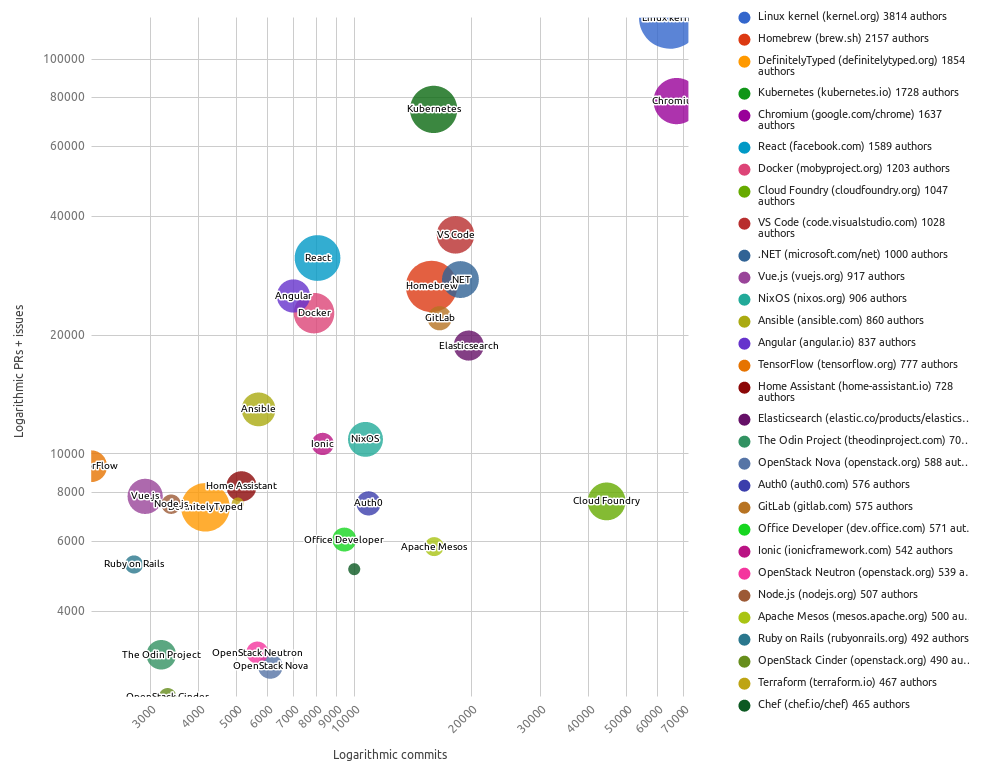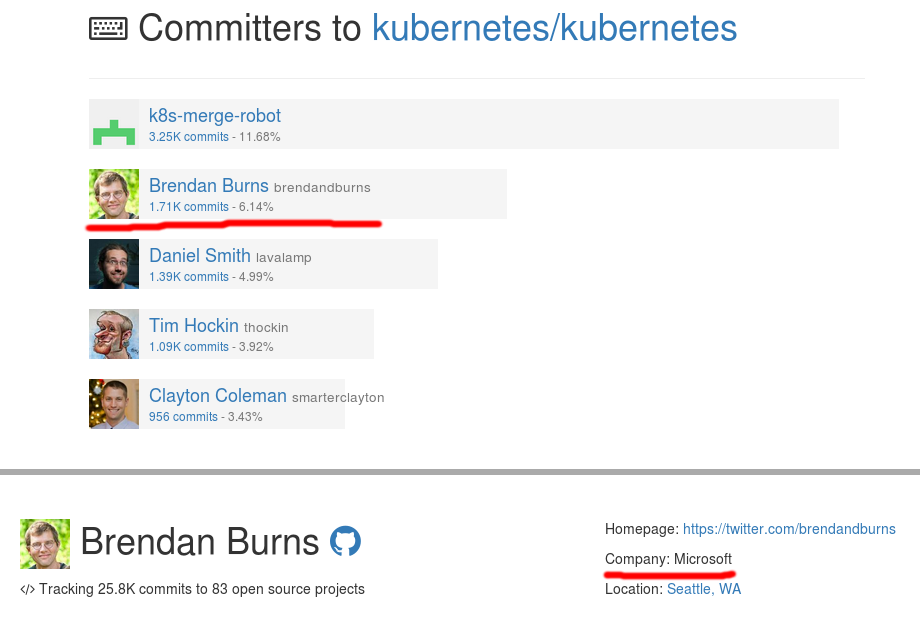What do large successful open source projects have in common?

The Linux Foundation organization wondered what unites open-source projects that have managed to gather around themselves a large community and achieve rapid development rates. To answer it, Dan Kohn (Dan Kohn), who heads one of the organization’s many divisions, CNCF (Cloud Native Computing Foundation), and his fellow developer (Łukasz Gryglicki) created visualization for the 30 most actively developing Open Source projects, according to statistical from May 2016 to April 2017. As numerical indicators that were taken into account for sampling the projects themselves and their visualization, the authors used:
- the number of commits (x-axis in the graph below) ;
- number of pull requests + issues (y-axis) ;
- the number of authors involved in the development (the value of the color wheel in the name of the project) .
')

(A picture with clickable project names and details on their numerical indicators is available on the Linux Foundation site .)
The leader in two indicators (the number of authors and PRs + issues) hardly anyone was surprised - this is a Linux kernel project. His closest pursuers by the number of authors are Homebrew and DefinitelyTyped . The leader in the number of commits, which bypassed even the Linux kernel, is Chromium , and the conditional pedestal on this indicator closes the Cloud Foundry , and with a large margin from all pursuers. And the last project, which got into the top 3 in another indicator (the number of PRs + issues), is Kubernetes .
By the way : The source code of the tools with which these statistics were collected, and the documentation on them are published on GitHub (Ruby language, Apache License 2.0).
If we analyze who is behind all the leading 30 projects, it turns out:
- 9 projects (including the Linux kernel, Kubernetes, Cloud Foundry, etc.) are created by an independent organization / foundation (for the listed examples are Linux Foundation, CNCF and Cloud Foundry, respectively), and 3 of them are in OpenStack (Nova, Neutron and Cinder) ;
- 15 projects (including Chromium, React, Docker / Moby ...) - created by a commercial company (Google, Facebook, Docker ...);
- 6 projects (including Homebrew, DefinitelyTyped, Vue.js ...) are created by the community without explicit companies / foundations.
The Linux Foundation cites the words of its executive director Jim Zemlin (Jim Zemlin), who believes that managing a successful Open Source project depends largely on the quality of the “cleaning service”: sorting bugs, answering questions from new users and developers, and solving legal issues and, of course, the settlement of all sorts of friction that inevitably arise with any large-scale cooperation.
Obviously, funds and large companies allocate special people and means in order to adjust the processes of solving the indicated problems. It can even be said that the presence of such an organization behind the project is the general thing that unites large and successful open source products. Statistics obtained from the top 30, confirms this: 80% of projects have their own “patron”. (The patron company “turns” into a fund at a time when other significant market players see for themselves the prospects for commercializing the code base and are looking for ways to have a real impact on the development of the project - through general advice, of which interested parties become companies.)
However, the remaining exceptions are 20%, which, even though they are a clear minority, still prove that the project’s success is possible through community efforts without clear sponsors.
PS Finally, on the issue of companies and foundations, try to guess the company whose employee is the leading contributor to the Kubernetes code base.
So, according to Libraries.io, this ...
If you are surprised too much, then I will reassure that in reality everything is somewhat more complicated. The author (Brendan Burns) joined the Microsoft Azure team only last summer, and before that worked for Kubernetes at Google.

If you are surprised too much, then I will reassure that in reality everything is somewhat more complicated. The author (Brendan Burns) joined the Microsoft Azure team only last summer, and before that worked for Kubernetes at Google.
Source: https://habr.com/ru/post/337968/
All Articles